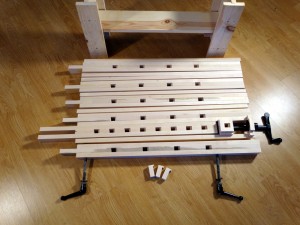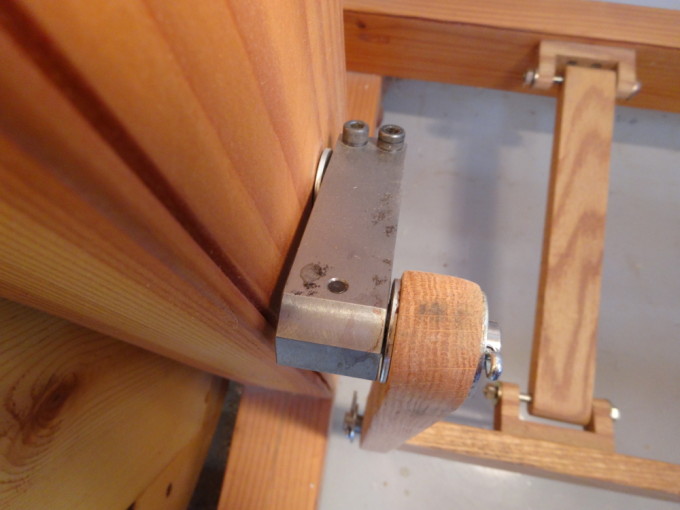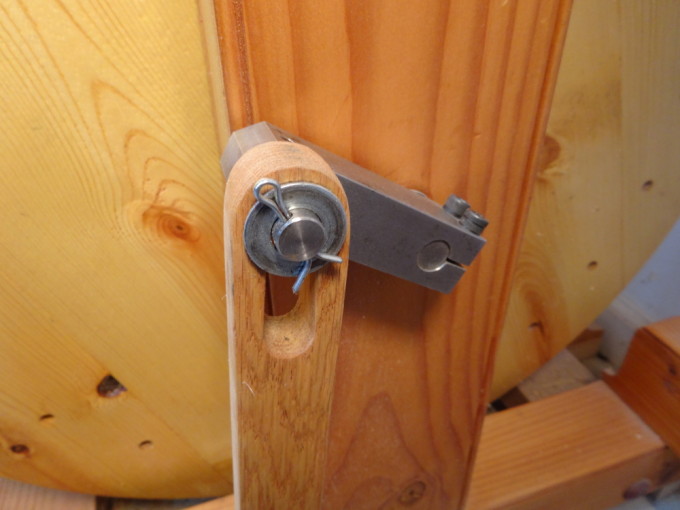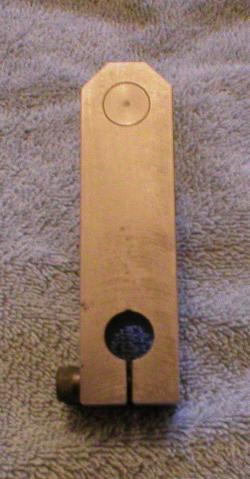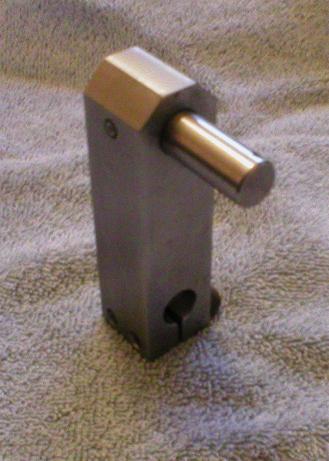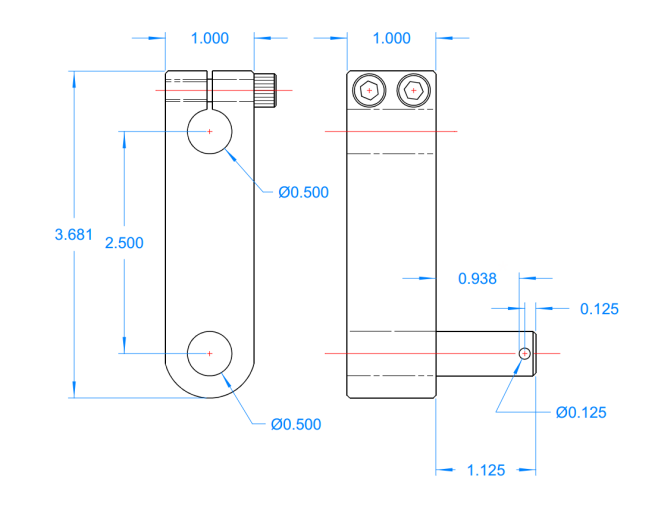just one photo for now…
Shopmade
Treadle Lathe – Machined Crank Details
Lathe builders in 1805 didn’t know Roger Davis. They’d just have a blacksmith make them a simple crank and be done with it. I didn’t know Roger either when I built my lathe. He saw the blog entry showing the (pathetic) wooden crank I made, in the absence of a blacksmith, and suggested it wouldn’t last long. It didn’t. He then made me one that will never fail. It is solid!
Roger Davis is a fellow Hoosier with the good sense not to move to New York, a frequent visitor to the Sawmill Creek forums, owner of “a very complete machine shop” and self-proclaimed “lack of good sense,” an aerospace engineer by education (Yay Purdue!), former high school teacher (physics, cemistry, algebra), a builder of scientific instrumentation (start to finish) as his paying job, a builder and user of muzzleloaders as one of his hobbies, and variously proficient in gunsmithing, blacksmithing, woodworking hand tools, A&C furniture, cooperage and who knows what else. Bottom line: a generously good guy.
So, why am I telling you all of this? Josh, from the previous post, wanted more information about the machined crank, as did Matt in the comments on the post about Stephen Shepherd’s kit of parts.
Photos and a drawing tell most of what you need to know to make one. If you have the metal working equipment to cut a block of steel, cut a slot in it, drill accurately, and tap some screw holes, you can make one similar. For what it’s worth, the distance between pivots was simply an estimate (a little more than a tenth the diameter of the flywheel) and has worked very well. Roger didn’t specify the size of the cap screws, but they look to be 1/4 by 20 by 1 inch long. The only other thing not shown on the drawing, that’s very visible in the photos, is a dowel pin that retains the crank pin. The retaining pin is probably not needed on this particular crank since Roger built it to such close tolerances that the crank pin probably took several tons of pressure to seat as a “press fit.”
When installing on the flywheel axle, be sure to go back and forth between the two screws, as they each affect the other’s tightness until they are really tight.
This crank has been very solid. I’ve got hours and hours of use on the lathe and ZERO, Nada, NO slippage from the crank. It simply works! Thanks again, Roger.
Treadle Lathe – Parts Update
Update (Oct, 2022): Stephen Shepherd’s website has disappeared from the interwebs. A couple of years ago, I heard he was having health problems. I certainly wish him well and will leave his link here in case he gets back on the air.
Any of you who followed my treadle lathe project know that most of it was based on Stephen Shepherd’s drawings of an 1805 Turning Bench. You might also remember that I stalled for a long time while searching for a blacksmith … who apparently fled NY’s wonderful tax system and literally headed for the hills.
I recently heard from another lathe builder who was also looking for certain parts, all the metal bits. Good News…
Just in! Stephen Shepherd has just pulled together a hardware package for people building the lathe. The hardware lets one keep the authentic nature of the machine with fittings that match the original plans (with a very minor size difference here or there). From Stephen’s description, the fittings look great and I see the price as very reasonable.
Highly recommended! see: http://www.fullchisel.com/blog/?p=4425
